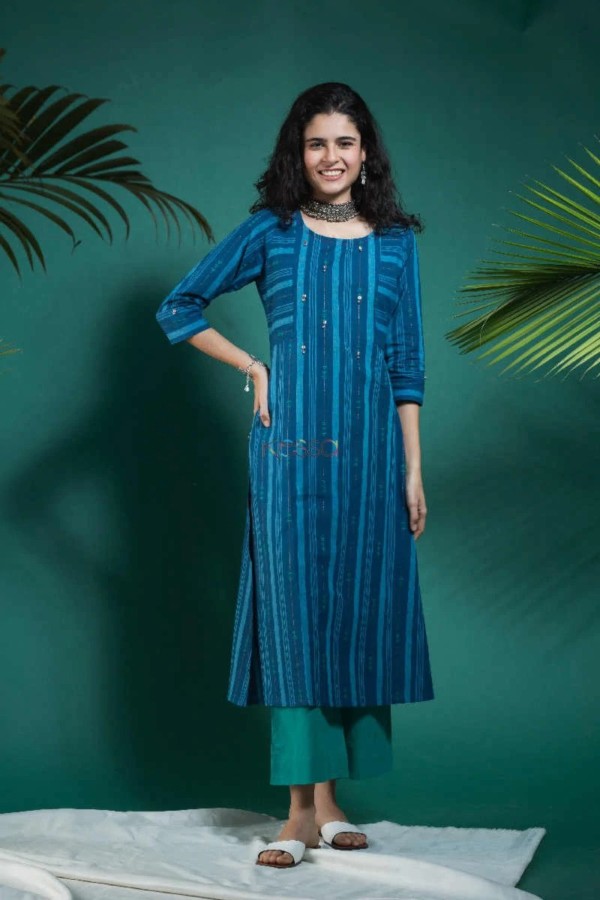Upcycling might be a trending concept in recent years, but the concept gave birth to the craft of Kantha centuries ago. Historians opine that Kantha is one of the oldest forms of embroidery that has been in practice since the pre-Vedic periods. Its origin can be traced back to 1500 BC.
For the initiated, Kantha is an embroidery with the charm and beauty of simplicity at its very core. The craft features variations of simple stitches to form exquisite motifs that are born out of spontaneous creative thinking.
Kantha – The epitome of utilitarian fashion
Kantha comes from the Sanskrit word “Kantha” meaning rags. In the age of looms and charkha, textile was a highly valued material. So, worn-out sarees and dhotis didn’t make theirs out of the home. Instead, they were layered carefully and stitched together to forms a coverlet or blanket. The simple needlework breathed new life into what was once a rag. The coverlets were eventually fed with thicker padding to create a thicker blanket – LepKantha.
Eventually, the simple Kantha designs percolated into covers meant for household furniture, makeshift wallets, handkerchiefs, sarees ad now luxe Kantha work kurta online celebrates the art in a modern fashion.Kantha went from beautifying rags to being the dream of global designers.
The caterpillar-to-butterfly journey of Kantha
In its initial days, Kantha embroidery featured simple, straight stitches that mostly formed borders. Eventually, much more intricate and elaborate motifs emerged in the realm of Kantha. Bengali women personalized clothing by infusing each design with their personality and imagination.
The intricate style of Kantha was known as “NakshiKantha”. “নকশা” or Naksha means intricate, artistic patterns or designs in Bengali. The rather contemporary style of Kantha embellished fabric with motifs inspired by religion, folklore, nature, everyday lives, and culture. It wasn’t uncommon to find clothes adorned with poetry, stories, and ballads. Kantha gave the women of Bengal a canvas to splatter with their imagination with no reigns on.
The fabric
Kantha looks the best in tightly woven, even-weave fabric like cotton and silk. The quality of the fabric also matters quite a bit to create a beautiful design.
Stitches – the different types
- Running – This is the simplest and the oldest form of stitches that created Kantha embroidery. The stitch is created by passing the threaded needle in and out of the fabric. The artisan makes sure that each stitch is of the same length and is equidistant. They are perfect for creating geometric patterns and for embroidering alphabets.
- Cross stitch – This stitch forms an “x” shaped pattern. They are mostly used to make carpets and are thought to be introduced by the English.
- Ananasi – Bengalis call pineapples “Anaras”. This stitch resembles the texture of a pineapple’s skin and is widely practiced in the Chapainawabganj and Jessore areas of northern Bangladesh.
- Borfi – It is a rhombus-shaped stitch. The stitch is often accompanied by triangular patterns called “kautarkhupi”.
Today, our designers have fused the old-world charm of Kantha with modern aesthetics to create magic with needles. At Kessa, we collaborate with the artisans of Bengal to bring you authentic Kantha kurta pant set for women, sarees, tops and more that has preserved the essence of the craft over generations.

